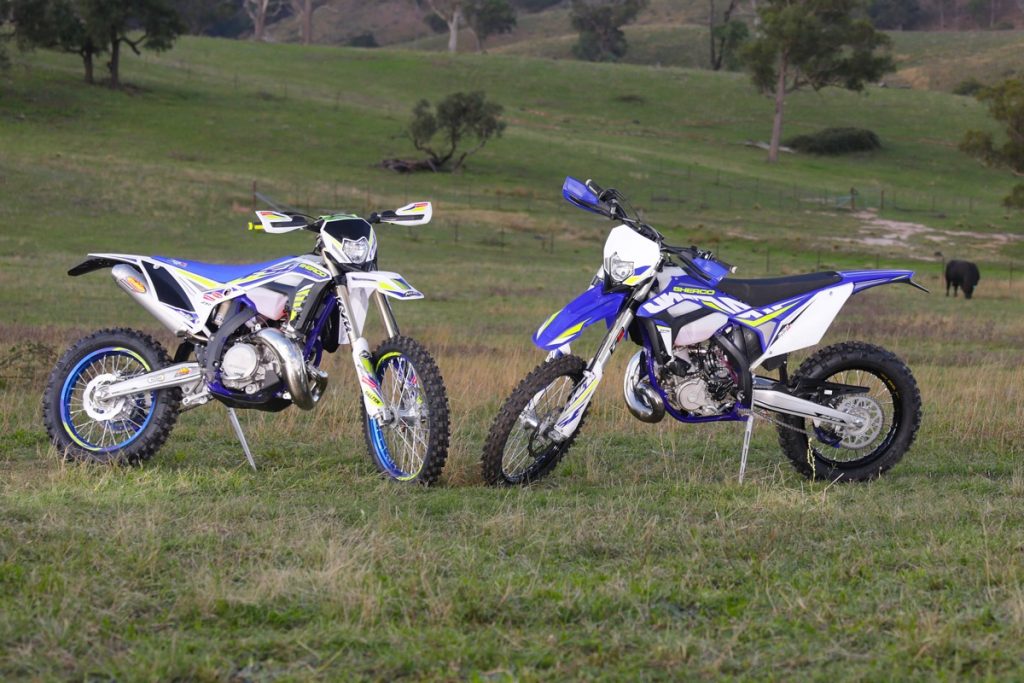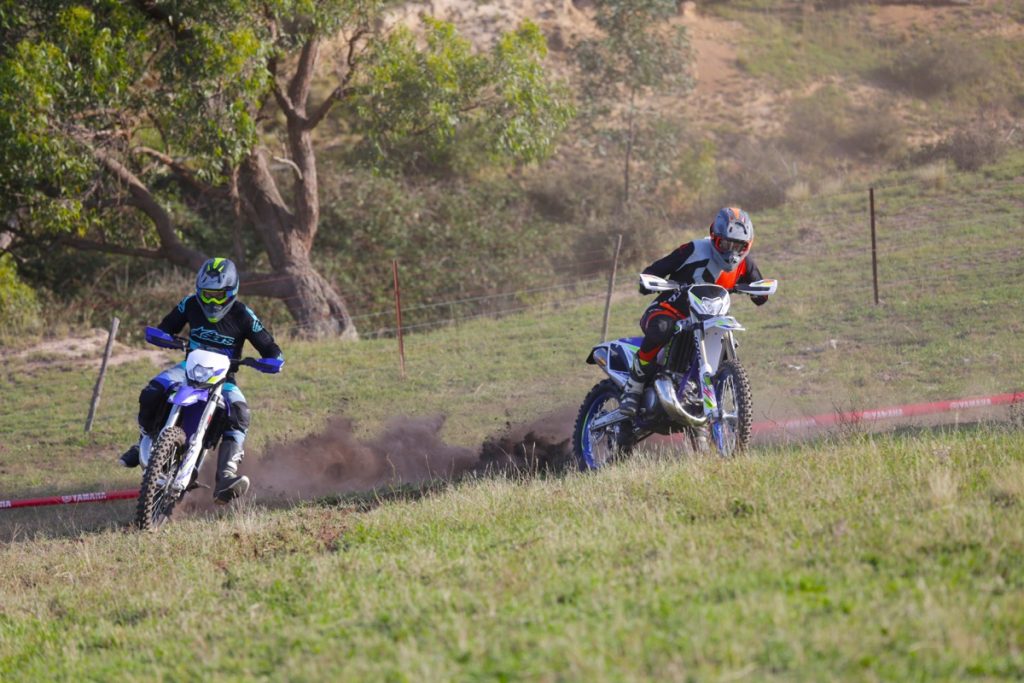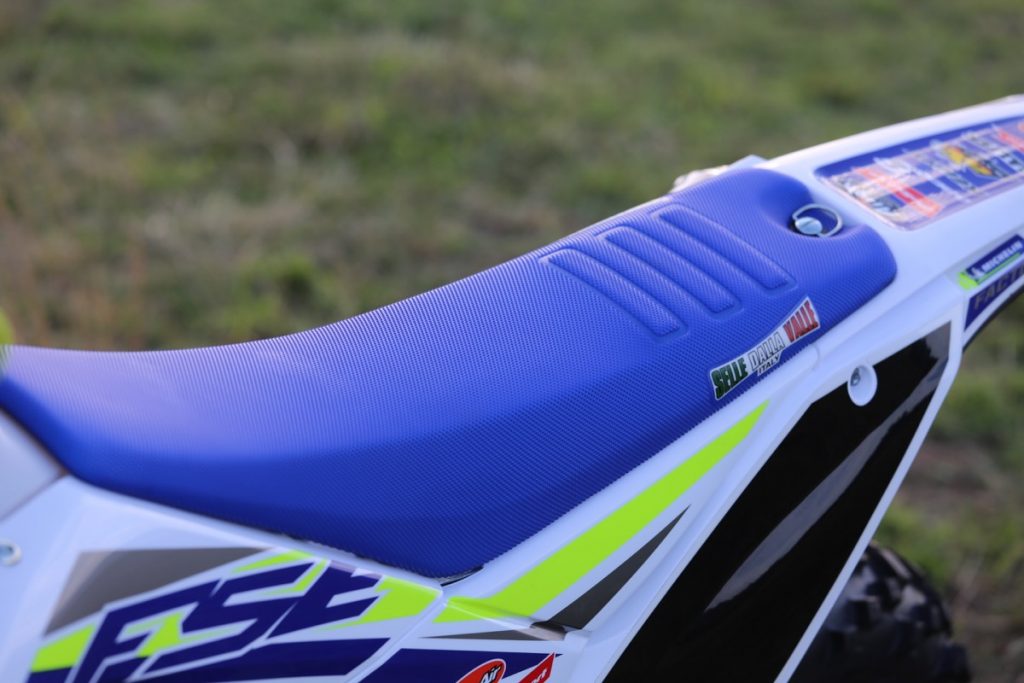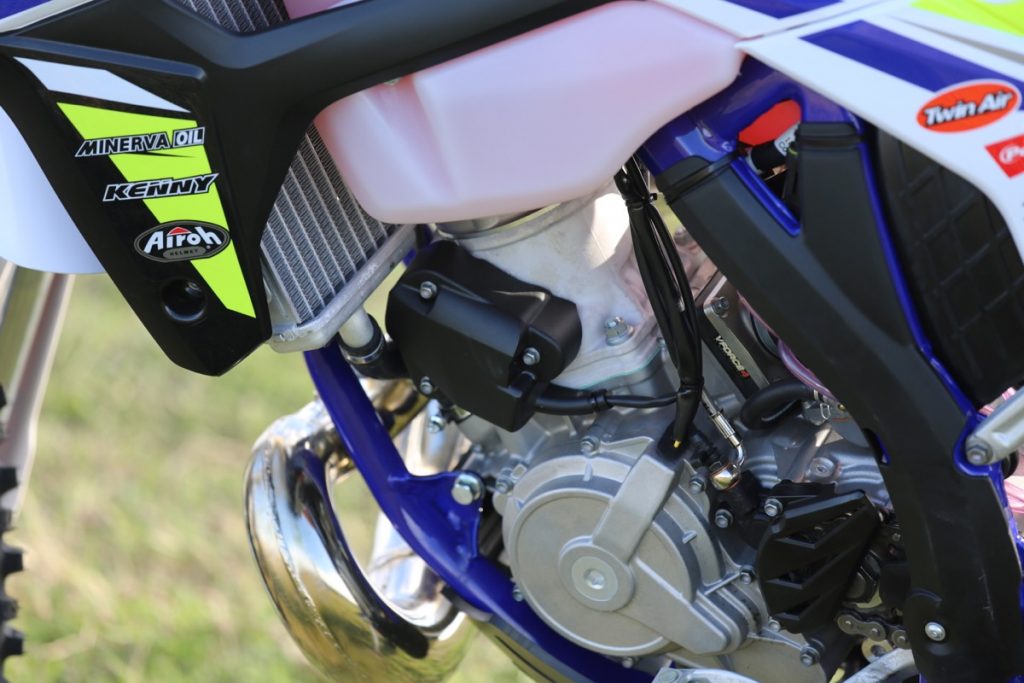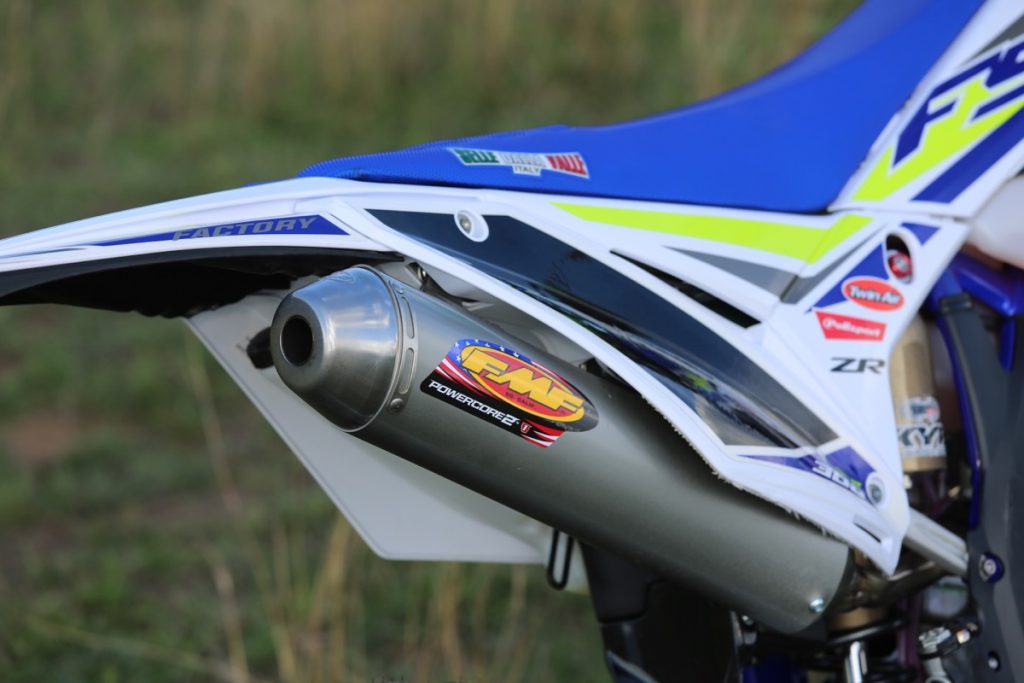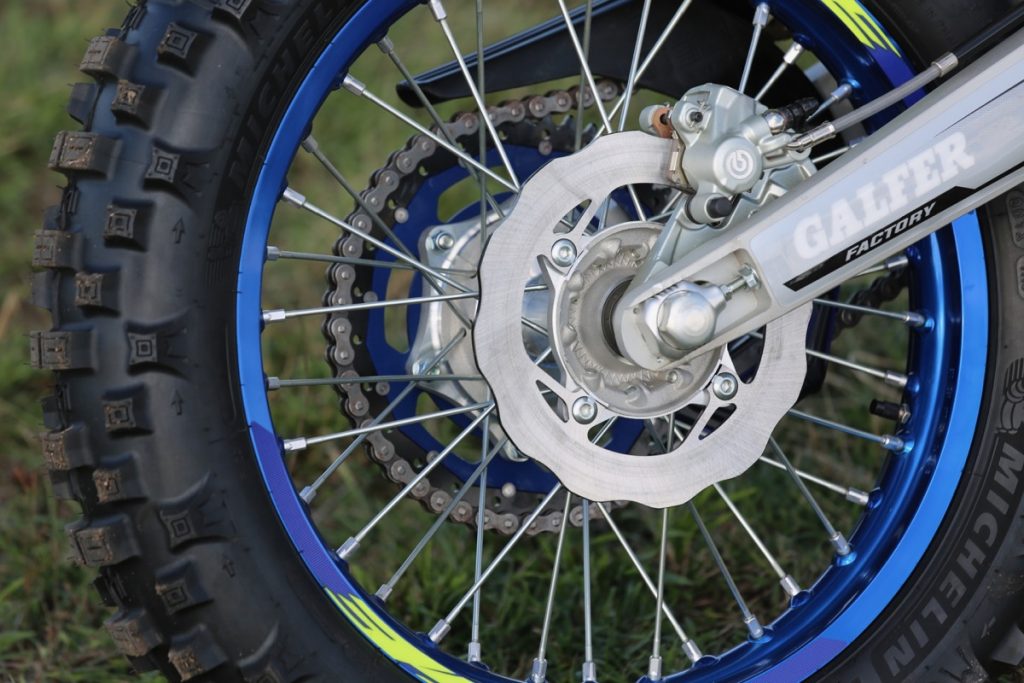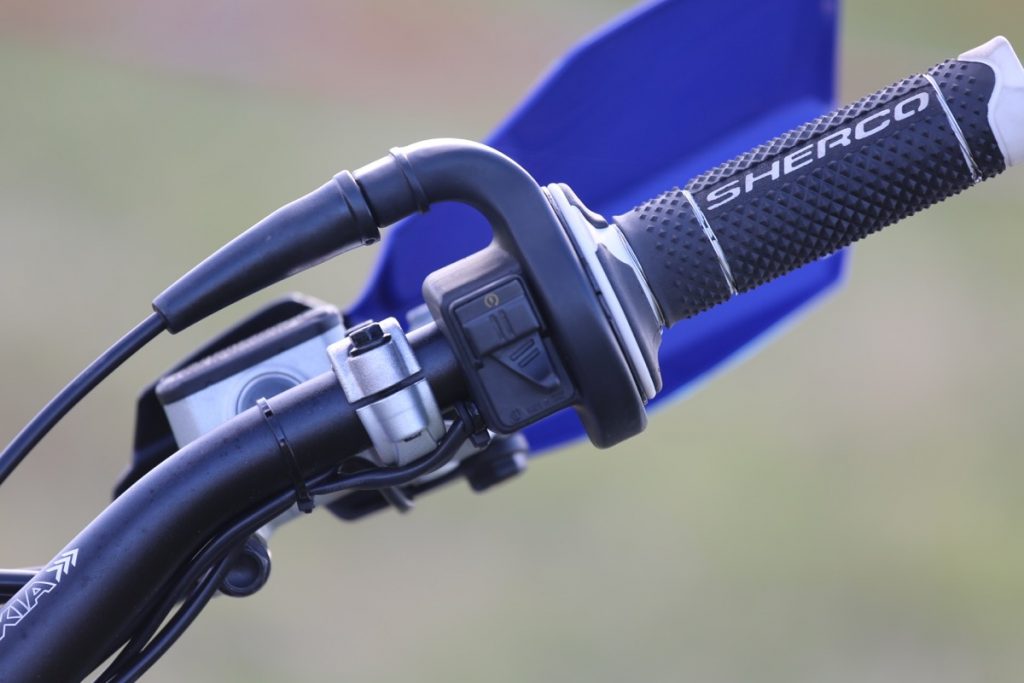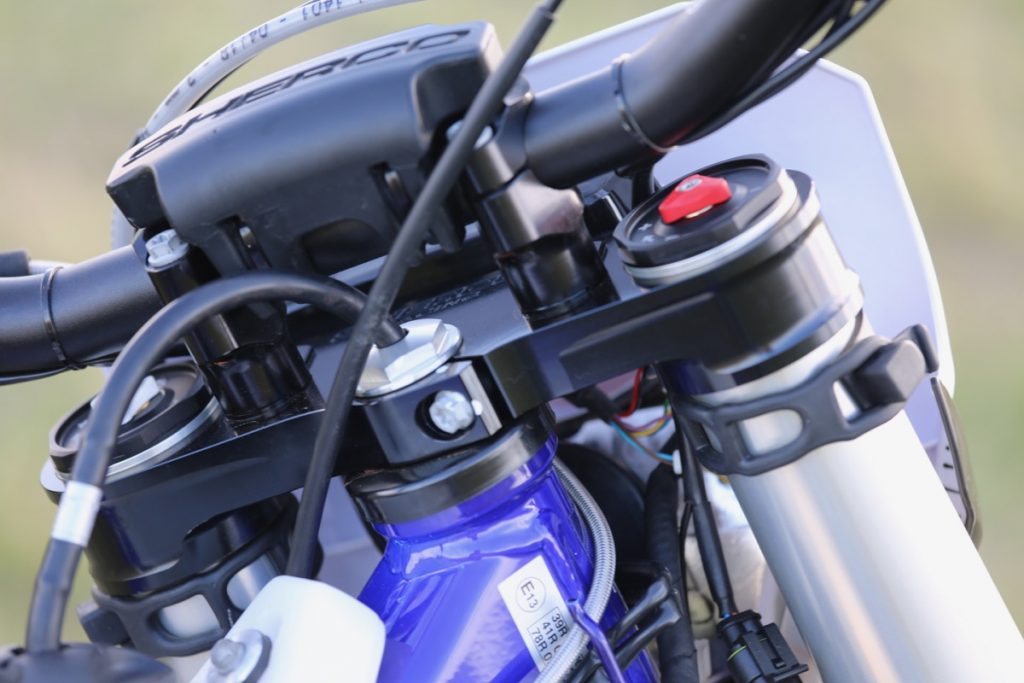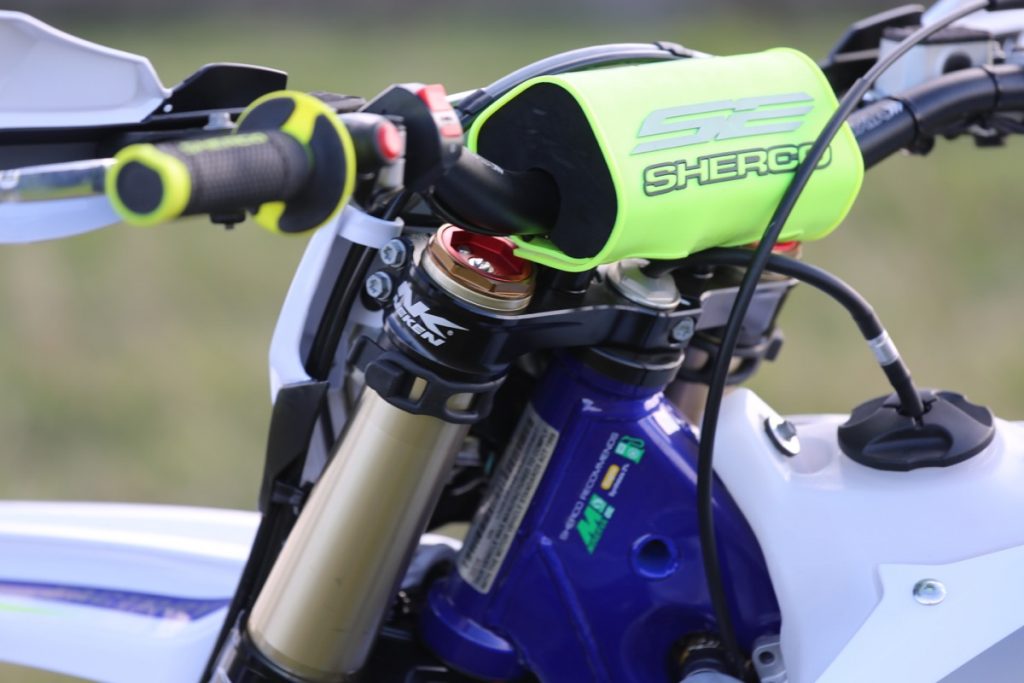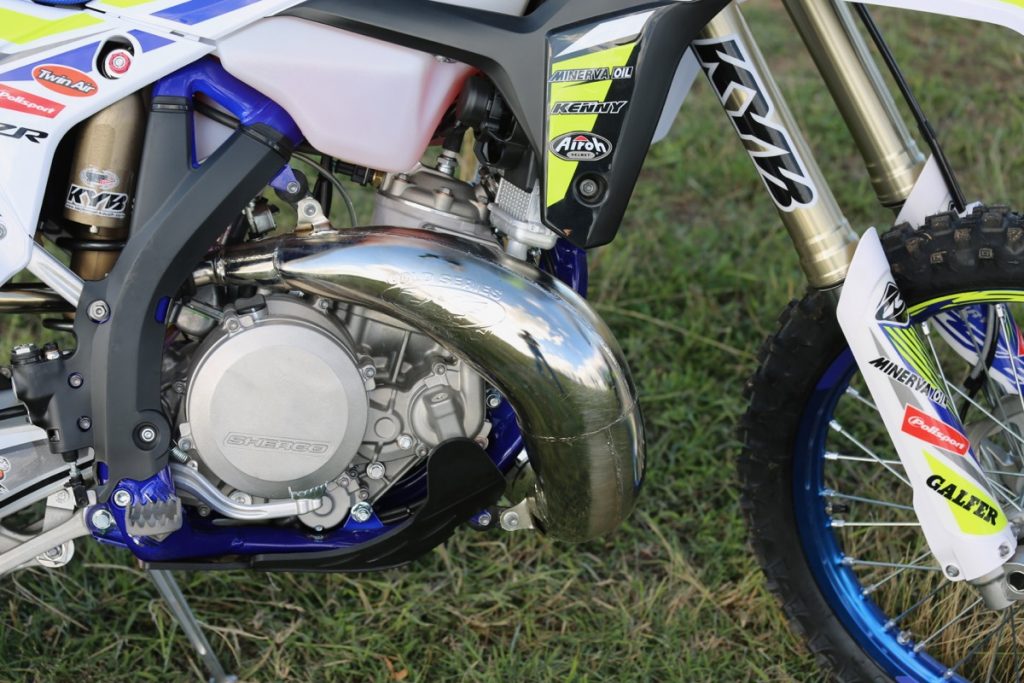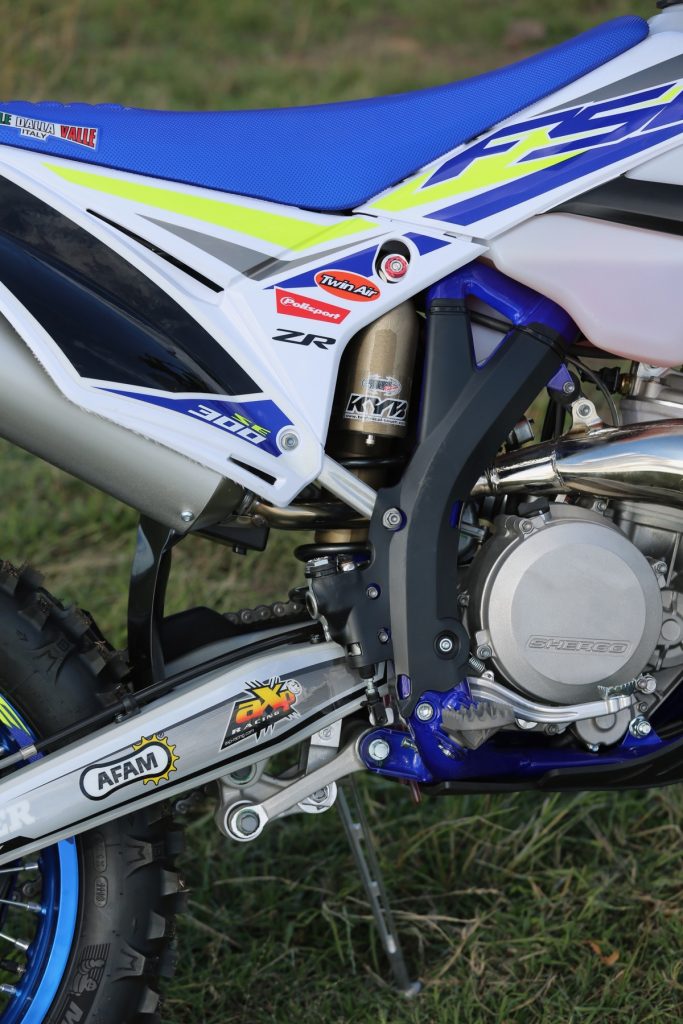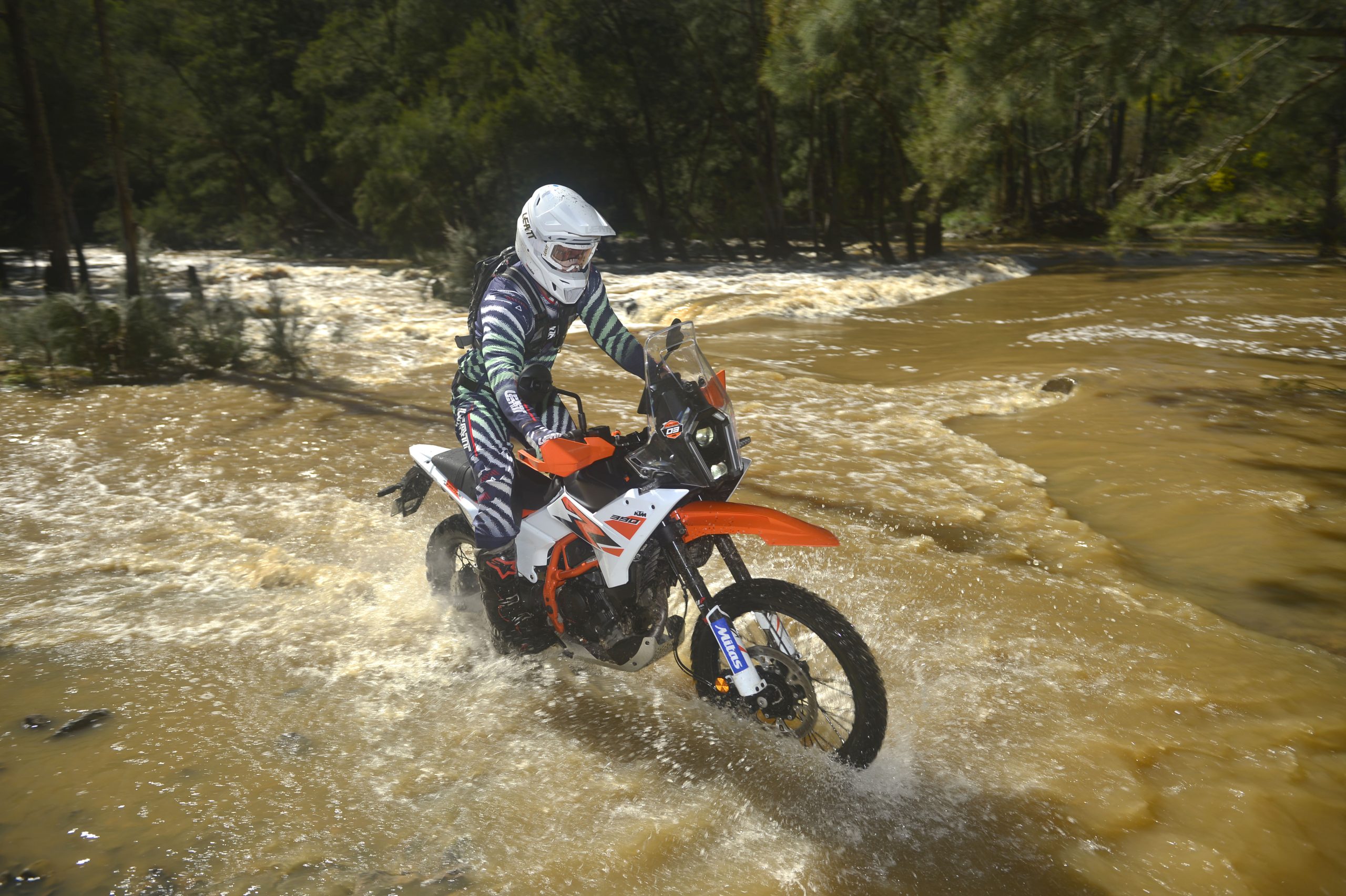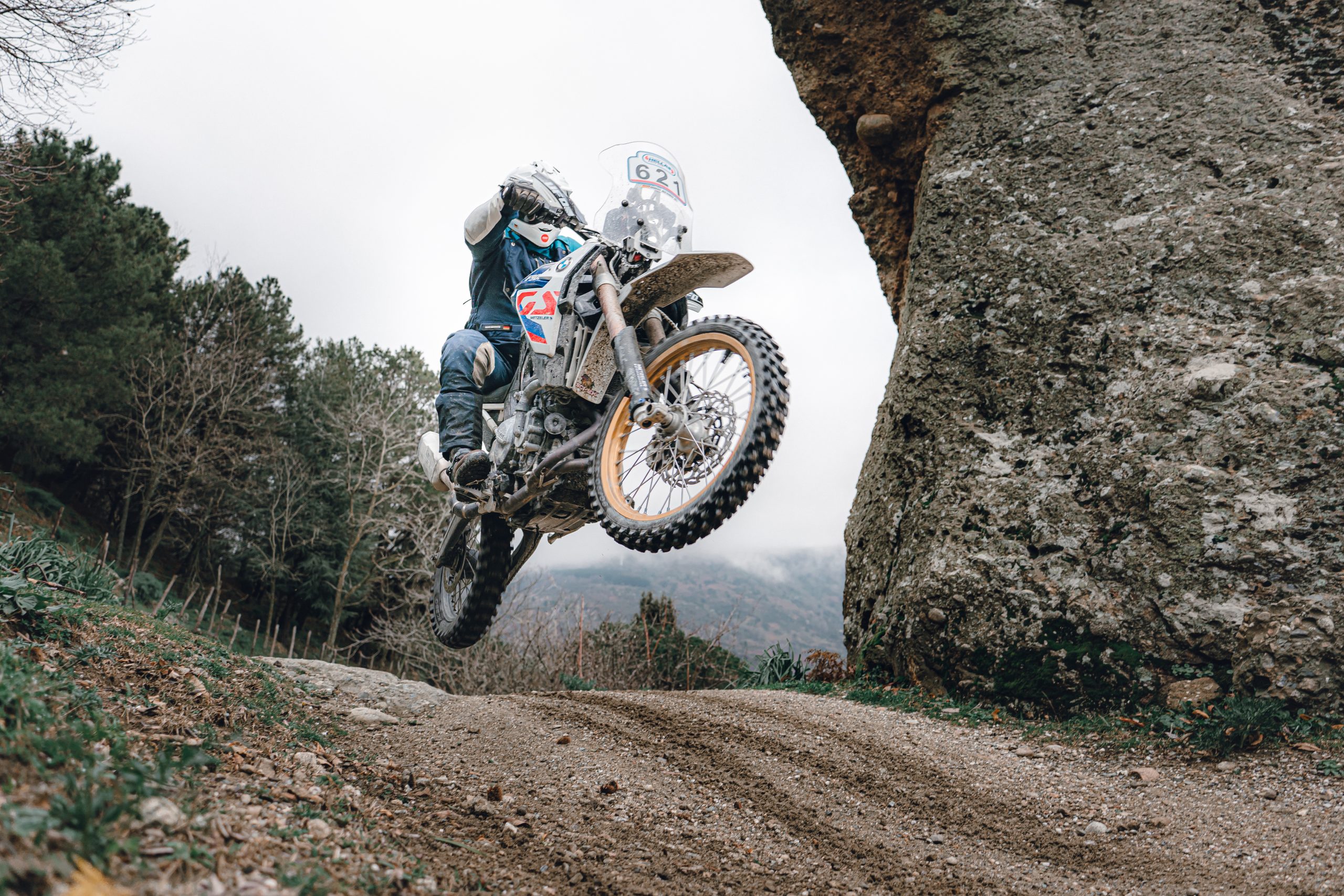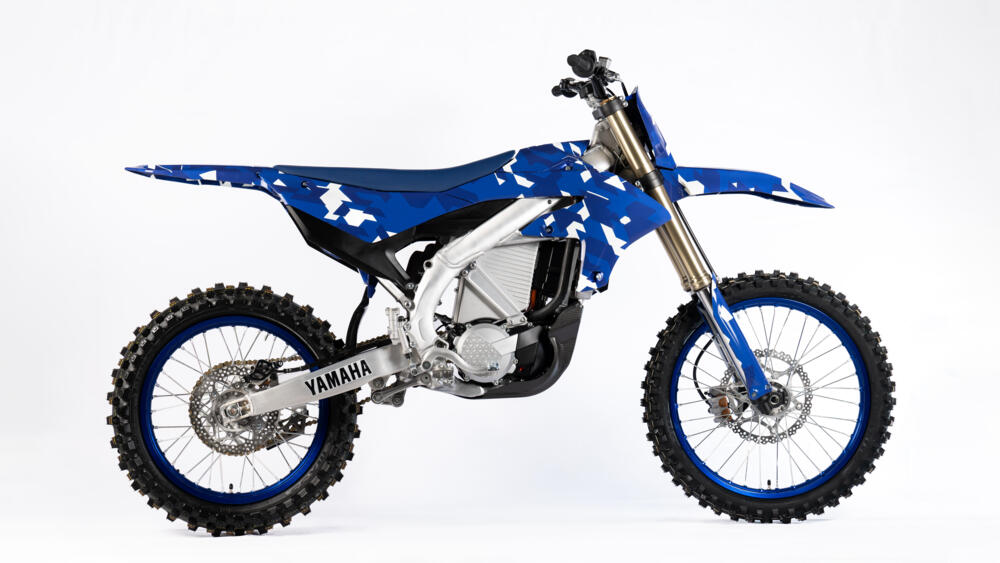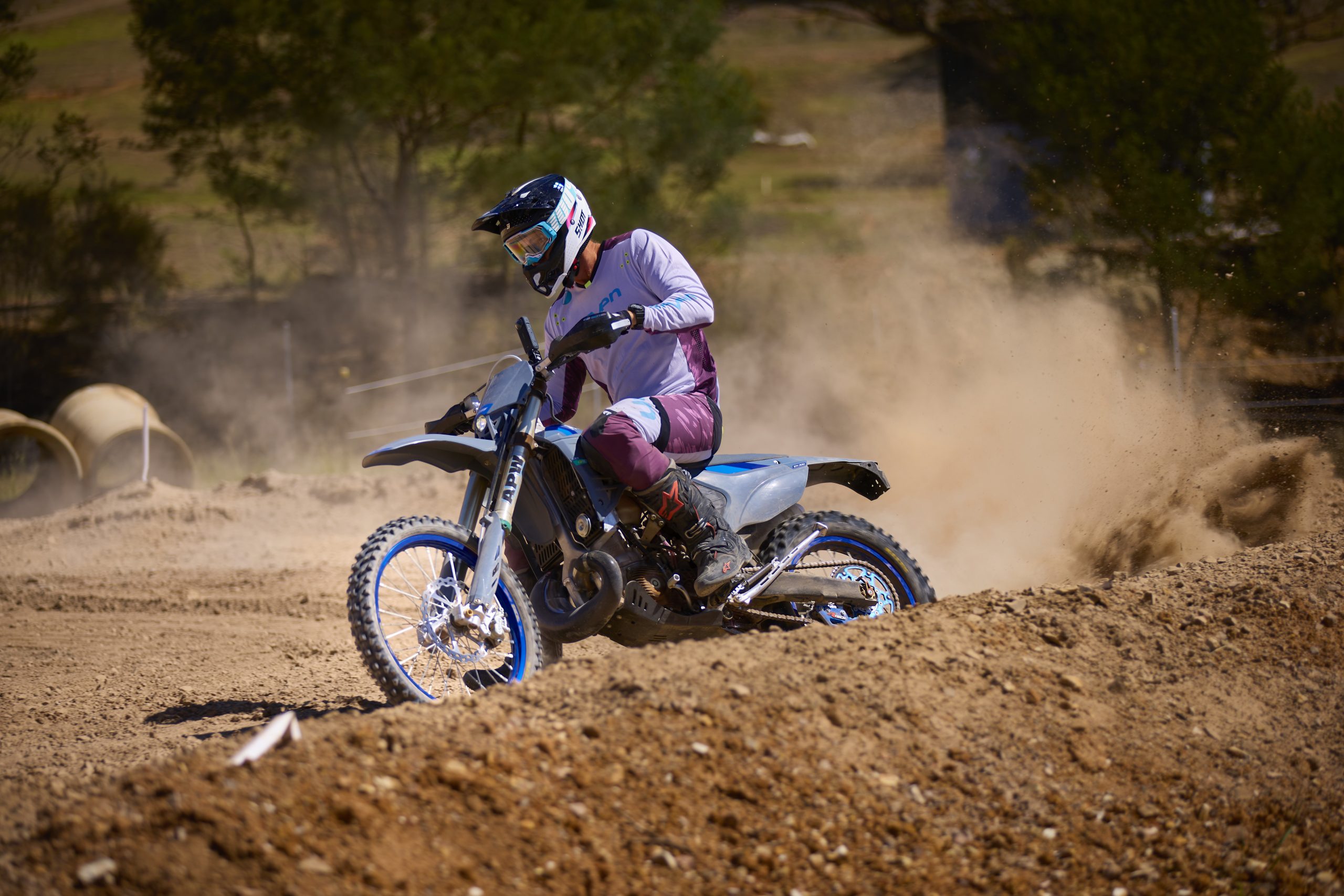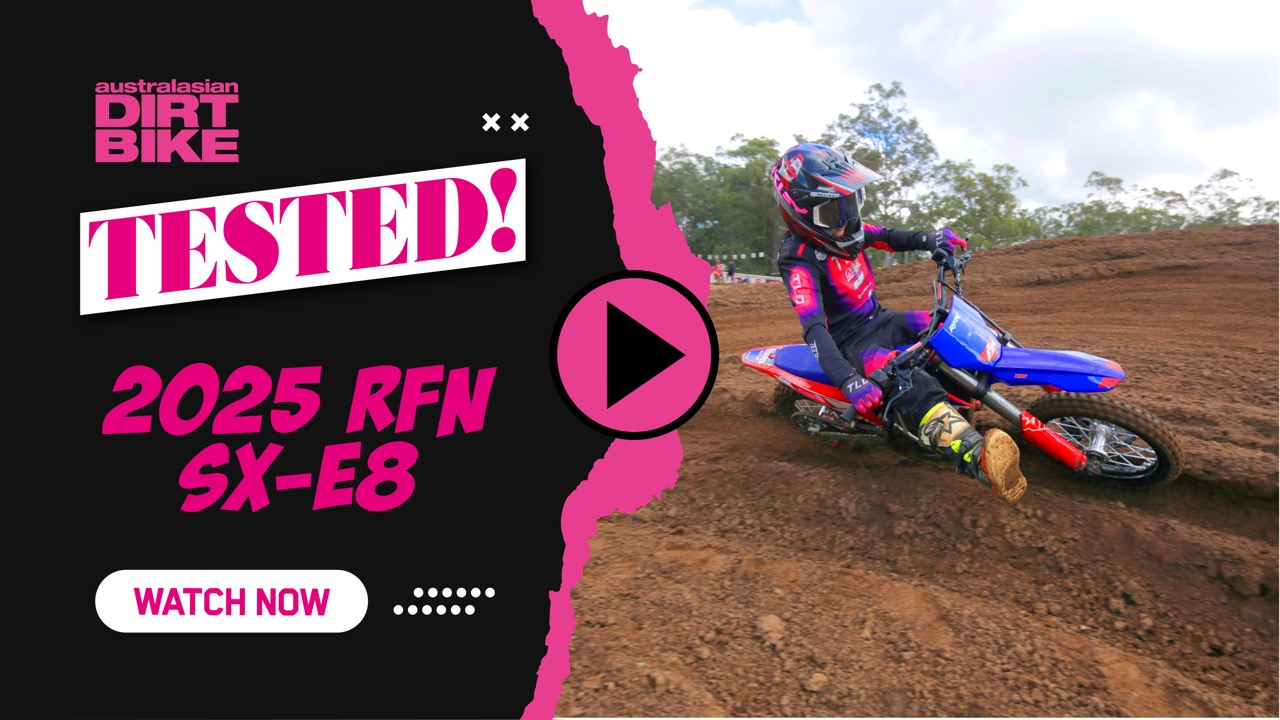We test the Sherco 300 SE-R and range-topping Sherco 300 SE Factory back-to-back to see whether the Factory’s $1900 premium is worth it.
Any good takeaway joint will sell you a burger with the lot. I’m not talking about your trendy burger bars run by bearded blokes in Doc Martens, I’m talking about corner shops that still serve hot chips wrapped in butchers’ paper.
For a few bucks extra it’ll come packed with bacon, cheese, pineapple, beetroot and loads of other healthy stuff that you might not think to put in a burger, but somehow it works. You could buy the standard burger to save a few bucks, just fork out for the bacon or, even worse, add extras at home, but why would you?
The same goes for enduro bikes, with many of the Euro outfits giving you the option of having all the trimmings. In this case, the shop is Sherco and the juicy burgers are the 300 SE Racing (SE-R) and 300 SE Factory two-strokes. They both come from the same kitchen and are made with the same essential ingredients but the Factory comes packed with a few extras to enhance the flavour.
You do pay a premium and it’s a fair question to ask if it’s worth the extra $1900 for the extra tasty inclusions so that’s what we’re here to find out. There’s no better way to see if the Sherco 300 SE Factory is worth the extra money than to ride it back-to-back with the base model. Both are delish, both are made with the best ingredients, but is the Factory that little bit tastier?
THE PATTY
The most important part of any burger is the patty. Screw up that piece of meat and you may as well whip out a McCain’s frozen pizza. The same goes for dirtbike suspension. The fastest rider with the most powerful engine in the world is only as good as the suspension propping it all up. Suspension makes or breaks a bike.
When Sherco decided to build a 300 SE Factory edition it was starting with something that was not your average burger. The 300 SE-R is a very competitive bike, you only need to read our 300T shootout in the last issue to know that, but most testers agreed more capable suspension would make it the ultimate package – enter KYB.
It’s no secret we are fans of KYB suspension, it helped the Gas Gas EC300 win last year’s 300cc shootout. Mounted to the fire-breathing Sherco 300 SE Factory, it balances the whole thing out. It’s more up to the task of handling the ridiculously strong engine the French engineers have produced than the WP Xplor gear on the Racing.
The Xplor 48 fork on the Racing model is softer across the full range of travel despite running different valving from the Kato version. You feel it as soon as you hop on or when you start tieing it down in the ute.
The WP suspension feels in its element at slower speeds – think hard enduro terrain. Sherco Australia told me Wade Young ran the WP gear on super-soft settings for most of last season, and he even confirmed in a video talking about his bike – see it HERE. Now Young is anything but slow but he spends most of his time crawling through terrain most of us wouldn’t be able to walk through and it seemed to work for him. The compliant suspension is what keeps a rider on the straight and narrow at first- and second-gear speeds. If things are too stiff you’ll be bumped all over the track, deflecting left and right while using all your energy to keep the bike going in the direction you want. For this, the WP is great and that’s why it scored well in the hard enduro section of last month’s shootout.
Where the WP suspension falls short is when you start clicking taller gears. At higher speeds, the Xplor fork starts to feel harsh and can deflect off rocks, tree roots and other trail garbage that’s trying to kill you. It also has a tendency to dive under braking because, to achieve a plush feel, the overall set-up had to be softer. This causes excessive weight transfer onto the front wheel as you set up for a corner which can lead to the front wheel knifing or tucking, instead of just tracking through cleanly. There are plenty of adjustments to be made on the WP fork and shock that go a long way to improving its performance but the KYB is simply better.
The KYB suspension is noticeably firmer so you might think it won’t be compliant at low speed. Well its party trick is that it does both. The Factory edition will crawl through snotty creek beds with the accuracy of a trials bike then flog around a grasstrack like a bat out of hell, giving a motocross bike a run for its money. What makes the KYB so versatile is how it adapts. The first part of the stroke at slow speed is soft and you notice it most riding over loose rocks. The fork doesn’t deflect and the shock does kick abruptly, working together they keep the bike tracking straight and true.
The shock also gives you a lot of confidence on slick terrain, it seems to find grip in situations where there shouldn’t be any.
As the landscape opens up and you move past third gear, that soft initial part of the stroke is bypassed and you’re left with the firm mid-stroke. It creates a very stable ride and doesn’t dive under braking or wallow through turns. The handling of the Factory is razor sharp. It feels like you can do no wrong and, when you do, the bike compensates. I’ll admit I’m average at long, rutted corners. I either push wide out of the rut or go too slow and tip over. I won’t be claiming the title as Rut King of Instagram from Enduro Editor Geoff Braico anytime soon but on the Factory I felt like I could at least be the court jester. The Factory locks into ruts like it’s on rails and you can make little adjustments mid-corner that don’t upset the balance of the bike.
The confidence I felt in corners also comes down to how the KYB behaves over the stuff you don’t see, like braking bumps, square edges and other things you would only see if you were staring at the front guard. Because I felt confident enough to keep my eyes up and looking further ahead knowing the suspension would handle whatever crossed my path, I could focus on upcoming corners. That’s not to say the KYB suspension flattens Planet Earth, there’s always going to be surprises while you’re riding, but if asked to choose between the WP gear of the Racing and the KYB of the Factory, the KYB gets the nod.
WHY SO DIFFERENT?
Why do the WP Xplor 48 and KYB spring-cartridge forks perform so differently? ADB Tech Ed Mat Boyd explains:
These two forks are like chalk and cheese, one is an open-cartridge design and the other is a closed-cartridge. The open-cartridge Xplor fork legs only have one chamber, where the compression and rebound valving is housed along with the spring. The KYB closed-cartridge fork houses the spring in the outer chamber while the compression and rebound valving is in the cartridge. The internal cartridge is kept under pressure for more accurate damping and to prevent any cavitation at fast fork speeds. The KYB fork was originally used in the Yamaha YZ range but recently found its way onto enduro bikes.
Because the rebound and compression adjusters are in separate legs, the WP offers less in the way of adjustability. The fork has adjustable compression and rebound but it makes little to no difference at low speeds. The fork is also often criticized for diving excessively under braking.
The KYB has great adjustability and the clickers are very sensitive to even the most minor adjustments. Servicing is much more complicated on the closed-cartridge fork as the inner chamber needs to be bled of all air and assembled correctly.
The WP is much more simple to service. You only need to fill it with oil and have the air gap set correctly. While anyone without the right knowledge can mess up both, I have seen many more mistakes or incorrect assembly done on the closed-cartridge forks than the open cartridge style.
TASTY CHEESE
The 300 SE-R comes with an FMF Gnarly expansion chamber, leaving little room for improvement but Sherco paired it with an FMF Powercore 2 silencer on the Factory. In my book, it’s not the most important performance modification but it’s a nice one, like an extra slice of tasty cheese on your burger. I say it’s not the most important performance mod because the Sherco 300T engine is strong enough without bolting on a better silencer. It came second in our grasstrack test last issue.
It’s a fairly aggressive unit that has incredible torque off idle, helped by the Gnarly pipe, and a screaming top-end that leaves most other 300s in its dust. It feels fast from the moment you push the starter button because of the vibration through the chassis, a stark contrast to its twin-balance shaft rivals that feel like electric cars at idle. As you ride off it pings and pops waiting for you to go faster, and when you crack the throttle the trees start moving past very quickly.
The aggression can become a bit much if you’re tired, especially in hard terrain that requires a steady hand. Luckily both models come standard with a power map switch that can tame the engine somewhat. Push right for Race mode and the engine is very responsive right off the bottom and the top-end stretches out far beyond my skill level. Push left on the map switch and things calm down drastically.
The serious meat comes higher in the rev range. The bottom-end is softer and more doughy while the top-end doesn’t scream quite as hard. I found myself using Race mode around the grasstrack because it felt and sounded better while I used the softer mode in the technical stuff. It’s an addictive engine that has you grinning ear-to-ear and it’s best experienced in the more capable chassis of the Factory edition.
BACON AND PINEAPPLE
The engine and suspension upgrades to the Factory 300 are what make it a more competitive bike than the Racing but the trimmings sweeten the deal. Galfer solid brake discs are used front and rear but they are the same size as the slotted discs used on the Racing so I didn’t notice an improvement in performance. Solid discs are an advantage in muddy conditions because grunge collects in the slots of vented discs and chews out the brake pads. Mud has nowhere to collect in solid discs so you’ll see longer pad life.
I found the ergonomics of the Factory to be more comfortable than the Racing because the cockpit felt more open. Shercos are more cramped than some other brands, and being tall doesn’t help, but the handlebar bend on the Factory and the Selle Dalla Valle seat put you in the great riding position. Yes, Oxia ’bars are used on the R and F but the Factory has a different bend that’s bolted to Neken triple-clamps and wrapped in a Neken bar pad. It’s got less rake, which would explain why the cockpit feels less cramped.
The Factory comes with an Oxia dual-material rear sprocket. It’s made of aluminium to reduce weight but the teeth are steel to increase longevity. The one on the Racing is solid aluminium – still a light unit but you might not get less mileage. A radiator fan also comes standard on the Factory which is a nice extra should you find yourself trying to emulate Wade Young.
PICKLES
Looks are subjective and attract differing opinions. Like pickles in a burger, a bike’s looks can cause fist fights at your local drive-thru. It’s the most obvious difference when you’re looking at these non-identical twins. The Factory’s white plastics, bright blue seat and fluoro yellow highlights make it look worth every dollar of the $14,290 asking price. People would stop to stare at the Factory in the back of the ADB ute at any service station we stopped at while the $12,390 Racing got ignored.
But at the end of the day, aesthetics are the least important difference between the two – unless looks matter more to you than me. You can easily personalise the look of your bike with a graphics kit, new plastics or a quick ride in the mud, for less than $1900 if that’s all you care about.
That $1900 wouldn’t buy you half of the goodies on the Factory. There’s the Galfer discs, FMF muffler, Selle Dalla Valle gripper seat, Neken triple-clamps, weight-saving battery that’s 1300g lighter (the claimed weights are the same because of the Factory fruit), composite AFAM rear sprocket, blue Excel rims and AXP skidplate. And while all those bells and whistles are nice, it’s the KYB suspension that provides the special sauce. It is the single most important difference between the Factory and the Racing.
You could build your own Factory edition if you picked up the Racing but you wouldn’t be doing your bank account any favours. If you want all the bells and whistles plus the KYB suspension, just go the burger with the lot, those French chefs know what they are doing.
Sherco 300 SE-R Specs
Engine
Type Piston-port, reed valve
Displacement 293.1cc
Bore & STROKE 72 x 72mm
Cooling Liquid
Compression ratio N/A
Fuel metering Keihin PWK 36mm
Tank capacity 10.4L
Transmission Six-speed, constant-mesh
Clutch Brembo hydraulic, wet multiplate
Dimensions
Wheelbase 1480mm
Seat height 950mm
Ground clearance 355mm
Weight 105kg dry
Suspension
Front WP Xplor 48mm, 300mm travel
rear WP gas-oil monoshock, 330mm travel
Brakes
Front Brembo twin-piston caliper, 260mm wave
Rear Brembo single-piston caliper, 220mm wave
Running Gear
Handlebar Oxia tapered alloy
Front tyre Michelin Enduro Comp 90/90-21
Rear tyre Michelin Enduro Comp 120/100-18
Price & Contacts
PRICE $12,390
web sherco.com.au
PHONE (03) 8363 1600
Warranty Six months parts and labour
300 SE Factory Specs
Engine
Type Piston-port, reed valve
Displacement 293.1cc
Bore & STROKE 72 x 72mm
Cooling Liquid
Compression ratio N/A
Fuel metering Keihin PWK 36mm
Tank capacity 10.4L
Transmission Six-speed, constant-mesh
Clutch Brembo hydraulic, wet multiplate
Dimensions
Wheelbase 1480mm
Seat height 950mm
Ground clearance 355mm
Weight 105kg dry
Suspension
Front KYB spring-cartridge, 300mm travel
rear KYB gas-oil monoshock, 330mm travel
Brakes
Front Brembo twin-piston caliper, 260mm wave
Rear Brembo single-piston caliper, 220mm wave
Running Gear
Handlebar Oxia tapered alloy
Front tyre Michelin Enduro Comp 90/90-21
Rear tyre Michelin Enduro Comp 120/100-18
Price & Contacts
PRICE $14,290
web sherco.com.au
PHONE (03) 8363 1600
Warranty Six months parts and labour
THIS FEATURE WAS FIRST PUBLISHED IN ADB ISSUE #478 – JULY 2019. WORDS: OLLY MALONE, PICS: MITCH LEES
